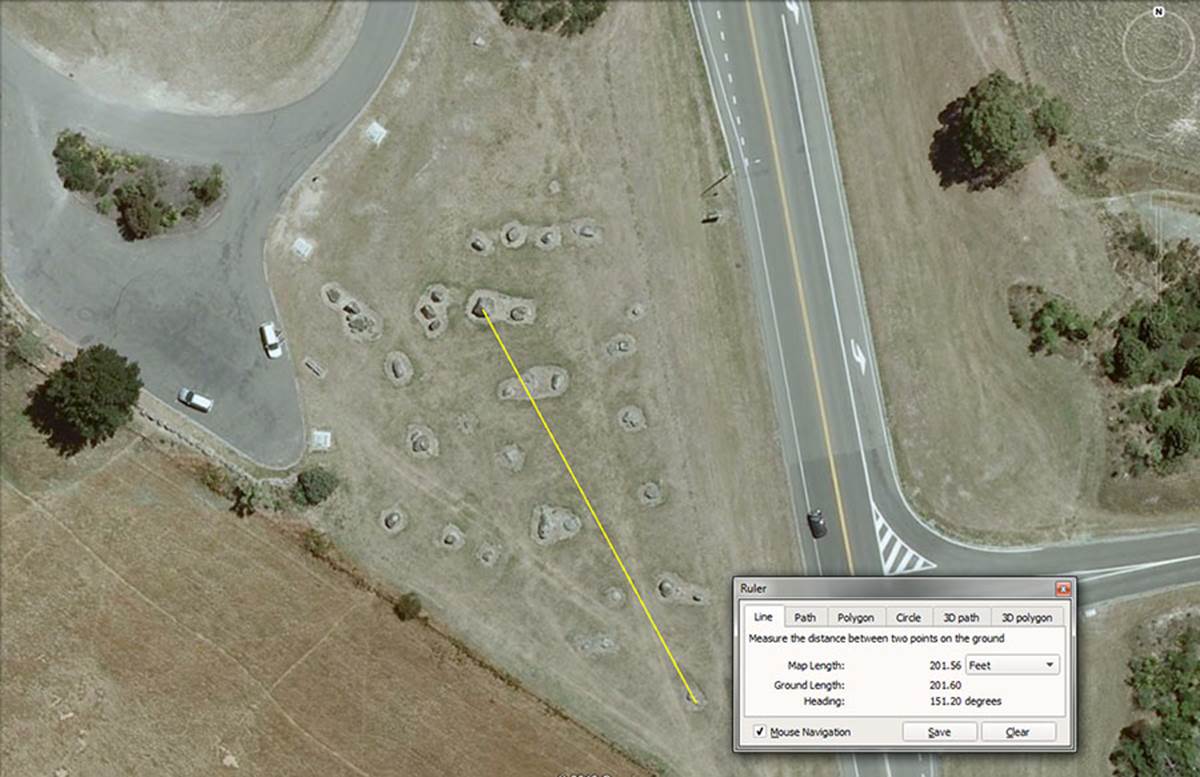
THE OBELISKS IN THE IMMEDIATE VICINITY OF THE HUBSTONE – the micro-site for teaching initiates the basic numbers of civilisation.
POSITION 1.

A line extends from the centre hubstone to an obelisk 201.6-feet removed at an azimuth angle of 151.2-degrees.
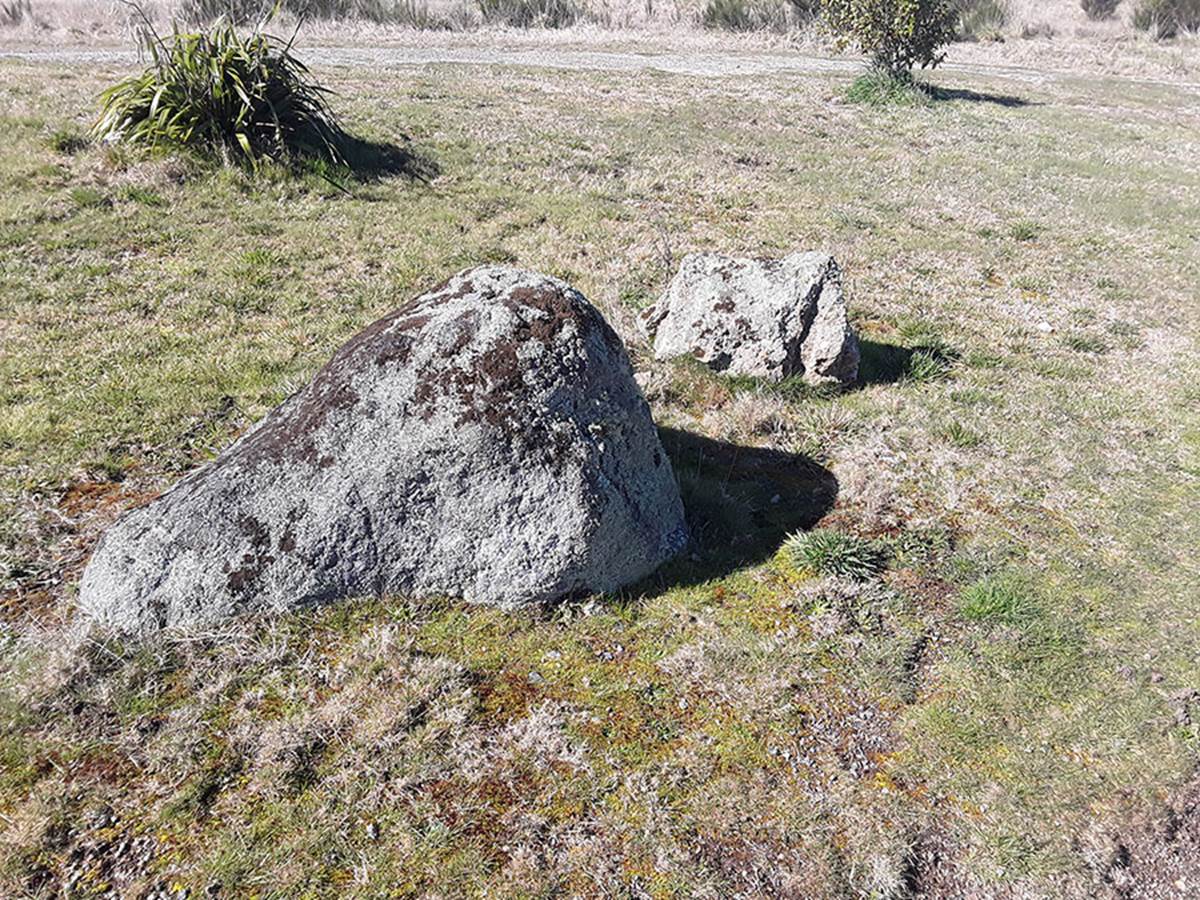
The dual stones that make up this component part of the site contain at least 3 distance codes out from the hubstone. The smaller boulder seen to the rear-right encodes 201.6-feet @ 151.2-degrees, while the larger shark’s-fin shaped obelisk, lying on an angle towards 330-degrees, encodes 196.875-feet and 198-feet respectively through its girth.
1. The 201.6 value is navigational coding that related to the equatorial circumference of the Earth, as literally encoded into the base perimeter dimensions of the Great Pyramid of Egypt. The length of 201.6-feet would be 1/30th of 1-minute of equatorial arc under that system.
The progression goes:
201.6, 403.2, 604.8, 806.4, 1008, 1209.6, 1411.2, 1612.8, 1814.4, 2016, … 3024, … 3628.8, … 6048, … 9072, … 362880, etc.
To understand how this progression works, one has to look at the literal dimensions of the Great Pyramid, with a side length of 756-feet. The sum of all 4 sides = 3024-feet and two circumnavigations around the pyramid = 6048-feet for 1-minute of equatorial arc. Therefore, 6048-feet X 60 = 1-degree of arc (362880-feet) and this value X 360 = 130636800-feet for the full equatorial circumference. This is 12 X 12 X 12 X 12 X 1.2 Greek miles of 5250-feet each (5000 Greek feet of 12.6-inches = 5250 English feet).
Also, the value 1008 shows up in the line-up of the above mathematical progression and 100.8-feet equates to 1-second of arc under this navigational system. Therefore, 100.8-feet X 60 = 6048-feet for 1-minute of equatorial arc.
2. The degree angle from the hubstone out to these boulder markers is 115.2-degrees and a progression based upon this value goes:
115.2, 230.4, 345.6, 460.8, 576, 691.2, 806.4, 921.6, 1036.8, 1152, … 1382.4, … 1728, … 2073.6, … 2880, … 3110.4, … 5184, … 6336, … 9331.2, … 10137.6, … 12441.6, … 24883.2.
The 11.52 code is one of the most important of antiquity and relates directly to the 12 X 12 X 12 X 12 X 1.2 –mile (24883.2-miles) equatorial circumference of the Earth. The sum of 11.52-miles would represent 1/2160th of the equatorial circumference or 10-minutes of equatorial arc.
It’s important to realise that there were two very closely related navigational systems used in remote antiquity that survived, in part, into modern times. One used a mile of 5250-feet, which, millenniums after its inception became known as the Greek-mile. This mile was divisible by the numbers 6 or 7 and worked very well for positional plotting at sea. The perimeter circuit dimensions of the Great Pyramid of Egypt are based upon this mile for reading the 24883.2-mile equatorial circumference of the world and 2 full circuits around the pyramid equate to 6048-feet for 1-minute of arc.
The increments for navigation were the mile (5250-feet), long stadia (630-feet), short stadia (525-feet), reed (10.5-feet), half reed (5.25-feet) and foot (12.6-inches). The Greek league equivalent would have been 3.125 Greek miles.
A second, slightly larger mile was 5280-feet and survived into modern times as the English mile (still used in the United States). It was divisible by the number 11 and was excellent for positional plotting at sea. It also was coded into the base dimensions of the Great Pyramid, either symbolically or literally by a mark incised into the paving slabs at the pyramid’s base. For this system, one side length of the Great Pyramid would have been read as 756.25-feet (instead of the literal 756-feet) or a mere elongation of the reading by 3-inches, making two circumnavigations of the pyramid to be 6050-feet for 1-minute of equatorial arc. This gave a reading of 24750-miles of 5280-feet each.
By this means a whole second navigational system came into play, using the league (16500-feet), mile (5280-feet), furlong or furrowlong (660-feet), chain, (66-feet), rod or perch (16.5-feet), fathom (5.5-feet originally) and link (7.92-inches).
In the above line-up of numbers 345.6-miles would be 1/72nd segment of the 24883.2-mile (in readings of either 5250-feet or 5280-feet) equatorial circumference or 5-degrees of arc. The outer rim perimeter of Stonehenge’s Sarsen Circle is 345.6-feet. There were once 30 Sarsen lintels in the circuit, measuring 11.52-feet each (138.24-inches).
The sum of 69.12-miles would be 1-degree of arc in a world 24883.2-miles around.
As mentioned, 1036.8 miles per hour would be the speed of rotation for a world 24883.2-miles around.
The sum of 1382.4-miles would represent 1/18th of the equatorial circumference or 20-degrees of arc.
A cubic foot of 12-inches would contain 1728 cubic inches.
Paving slabs at the base of the Great Pyramid measured 1.728 feet or 20.736-inches and this length constituted the longest of 3 Egyptian Royal cubits, the other two being 20.625-inches and 20.61818182-inches respectively.
The area of 28800 square feet was a pyramid acre.
The sum of 3110.4-miles was 1/8th of the equatorial circumference.
The angle 51.84-degrees is the slope angle of the Great Pyramid. Also, the length of the Great Pyramid @ 756-feet per side is 72 reeds of 10.5-feet each. Therefore, the base area the pyramid covers is 72 X 72 reeds or 5184 square reeds.
Likewise, in the 25920-year cycle of the Precession of the Equinoxes, 5184-years is 1/5th part. In navigation using the so-called English league of 16500-feet (3.125-miles), when this lineal distance (sea-leg) is converted to a circumference using PI 1728/550ths (3.141818182) the circuit is 51840-feet or 144-feet per degree of arc.
The weight of the Sumerian-Babylonian Royal Double Standard Talent was 933120-grains.
But beyond configuring the Earth in factorable number to represent 24883.2-Greek miles (130636800-feet) or 24750 English miles (130680000-feet), one could view it as 24883.2 miles of 5280-feet (131383296-feet) or 101.376-feet for 1-second of arc. Such a system would be difficult to navigate and do positional plotting under, but it does describe the equatorial circumference to within 18.8-miles of accuracy (24902-miles actual).
The late era druids or their “Masters of the Craft” forebears amongst the cousin nations always used number strings of factorable numbers that could be increased or reduced with ease, to describe their navigational or cyclic-astronomy sciences.
It can be readily seen that being a “Druid” entailed far more than dancing around oak trees singing “Hey-derry-derry-down”.
THOSE OTHER TWO NUMBERS, 196.875 & 198.
In the length codes related to this two-boulder position, the nearer-in boulder is capable of encoding 196.875-feet and 198-feet respectively within its girth.
The sum of 196.875 grains weight of gold dust was used as the Beqa Standard by the Egyptians and was adopted by the Romans and Greeks for their gold standards. This standard is based upon lunar cycle durations.
A progression of 196.875 goes:
196.875, 393.75, 590.625, 787.5, 984.375, 1181.25, 1378.125, 1575, 1771.875, 1968.75, 2165.625, 2362.5, 2559.375, 2756.25, 2953.125, 3150, … 3543.75, … 4725, … 6300, … 7087.5, 12600, etc.
In this line-up of numbers 393.75 grains represented the Roman Double Beqa and 393750 grains was the weight of an Egyptian Talent of gold.
The sum of 29.53125-days (29 & 17/32nds) was 1 lunar month and 354.375-days was a lunar year.
The design length of the Khafre Pyramid of Egypt is 15/16ths that of the Great Pyramid or 708.75-feet. The pyramid itself is made up of essentially two 3,4,5 triangles back-to-back. Therefore, half the base length is 354.375-feet (in days this equals 1 lunar year). This is the “3” aspect of the 3.4.5 triangle (based upon 3 X 118.125, which would be, in days, 4 lunar months of 29.53125-days each).
From the centre of the pyramid to the apex the intended vertical height was 472.5-feet or “4” X 118.125 … in days = 16 lunar months.
The apex to the base diagonal was intended to be 590.625-feet or “5” X 118.125 … in days = 20 lunar months.
The value 126 alludes to the Greek-Hebrew reed of 126-inches (10.5-feet) or 10 Greek feet, whereas 630-feet was a stadia or stadium of 30 reeds, or 600 Greek feet.
A progression of 198 goes:
198, 396, 594, 792, 990, 1188, 1386, 1584, 1782, 1980, … 6534, 7920, … 13068 and ultimately 130680000.
The diameter of the Earth is 7920-miles of 5280-feet or 1980-miles X 4.
The sum of 5940-feet was the ancient Scottish mile, which was 1 furlong (660-feet) longer than the English mile of 5280-feet.
The sum of 130680000-feet would be 24750-miles of 5280-feet each … the equatorial circumference of the world under the “11” system of navigation.
POSITION 2.
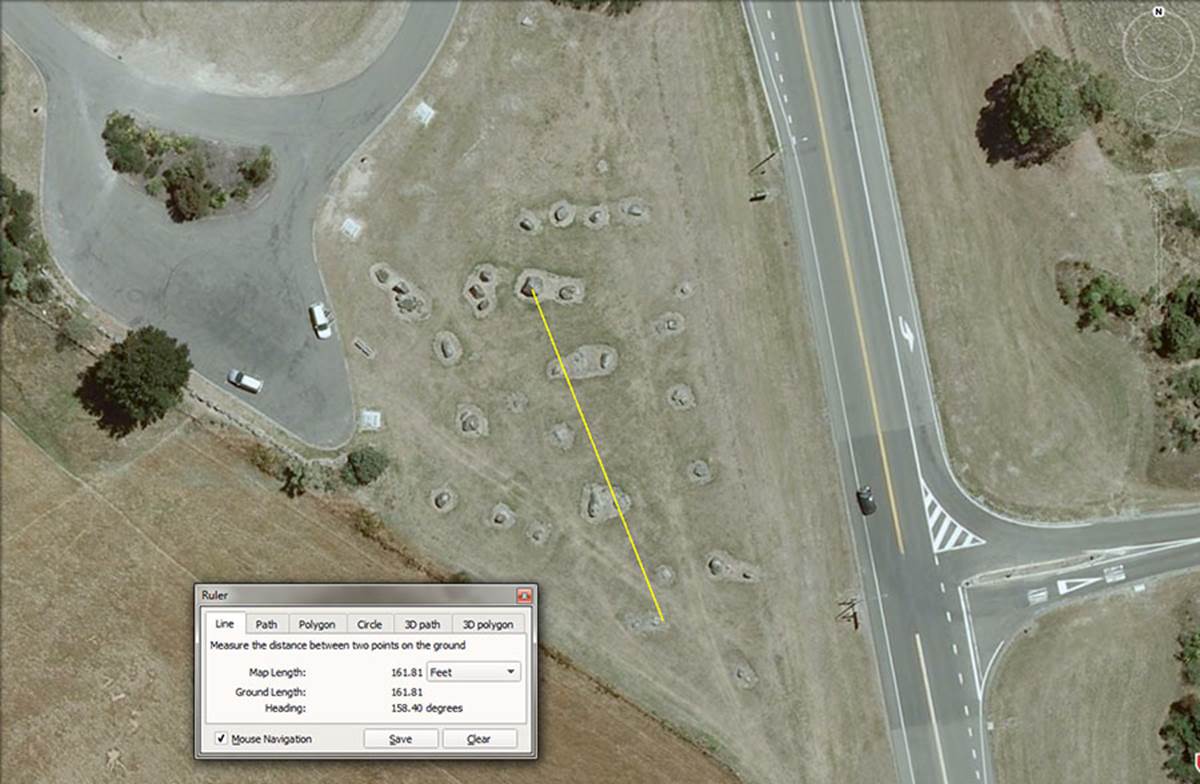
This position is made up of two recumbent boulders, the first of which seems to have been tumbled WSW. The ancient intended code to this position seems to have been 158.4-feet @ 161.804-degrees.
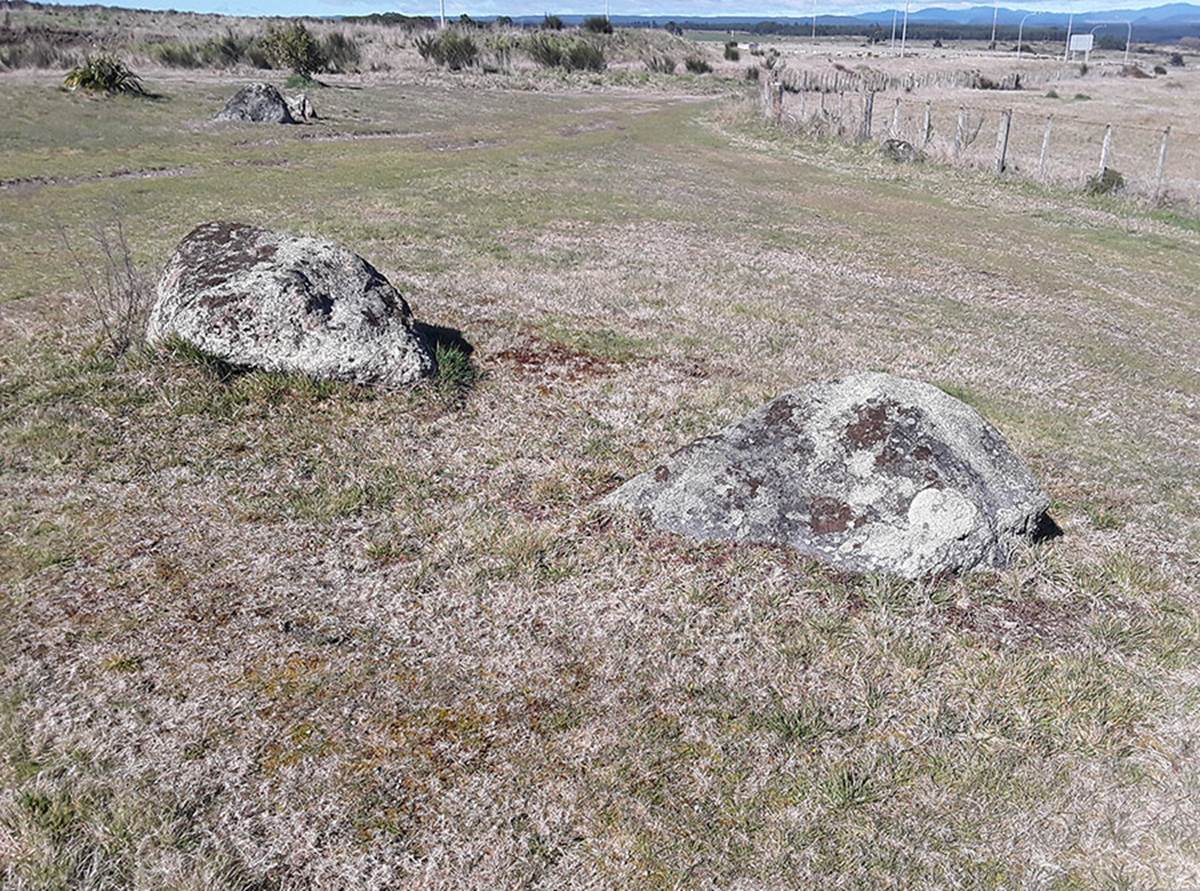
To the left is seen the boulder in question, which seems to have fallen towards the boulder to the right.
A progression based upon 158.4 goes:
158.4, 316.8, 475.2, 633.6, 792, 950.4, 1108.8, 1267.2, … 1584, … 1900.8, … 2376, … 2851.2, … 3960, … 7920, … 10137.6, etc
The sum of 158.4-miles of 5280’ each would be 1/50th of the 7920-mile diameter of the Earth.
If the Earth is stated as being 24883.2-miles of 5280-feet each, then the sum of 101.376-feet would be 1-second of equatorial arc.
Along with 158.4-feet, the girth of the boulder could have accommodated the coded values of 160-feet and 162-feet, both being much used dynamic numbers of antiquity.
The angle to the boulder would seem to comply very favourably with 161.8034 to encode the PHI ratio of 1 to 1.6180339. The importance of this ratio to ancient civilisations cannot be overstated and it was used in the coded attributes of the Great Pyramid. For example:
THE CODED PHI ANGLE & THE PHI BASED PYR. ACRE
If one uses simple trigonometry to work out the side length of the full pyramid, including the theoretical, non-existent capstone, the length to the centre apex would be ½ the base length (378-feet) ÷ 51.84 Cos. = 611.7894615 feet.
Alternatively, if one used a PHI method of 378 feet X PHI (1.6180339) = 611.6168142 feet.
It will be observed that the calculated length using the PHI method is only about 2 inches less than the length achieved by the 51.84 angle method and straight trigonometry. The ancient astronomer/ mathematicians were coding a PHI related angle for the Great Pyramid simultaneously to the standard angle of 51.84-degrees. The whole edifice was designed to clearly code close PHI relationships.
For example:
Let's consider the Great Pyramid on the basis of PHI and the ratio relationship (in pyramid acres) between the 4 faces, compared to the ground area that the Great Pyramid covers.
The surface area of each face of the theoretical full pyramid, complete with a (symbolic) pointed capstone, = 611.6168142 feet of diagonal face side length X 378 feet (½ the base length) = 231191.11558 square feet.
Because there are 4 faces, their combined square footage amounts to 924764.6231 square feet. This translates to 32.10988275 pyramid acres of 28800 square feet each.
The base area measured 756 feet X 756 feet or 571536 feet, which equated to 19.845 pyramid acres of 28800 square feet each.
A perfect PHI relationship exists between this (symbolic capstone included) total side acreage and that of the base: 32.10988275 ÷ 19.845 = 1.6180339 (PHI).
Likewise, the PHI reciprocal 6.1804 (inches) was anciently used to “square the circle” for fabricating round tubs of perfect cubic inch capacities for the ancient marketplaces.
THE OTHER BOULDER IN POSITION 2.
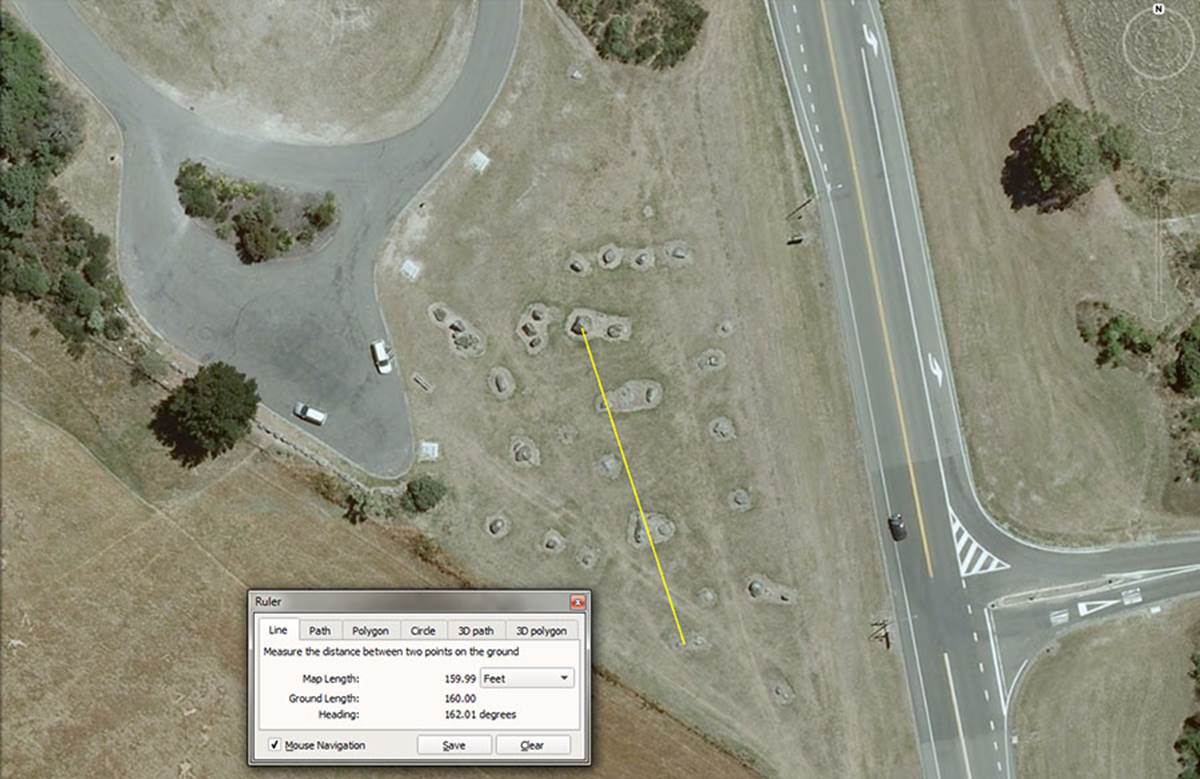
It looks probable that the second boulder needs to roll slightly to the ENE in order to assume its former standing position. The code for this position was, undoubtedly, 160-feet @ 162-degrees.
A mathematical progression for 16 goes:
16, 32, 48, 64, 80, 96, 112, 128, 144, 160, 176, 192, 208, 224, 240, 256, 272, 288, 304, 320, etc., and requires little explanation as to its usefulness in calculations.
Areas where 2, 4, 8, 16, etc., divisions were traditionally applied include the 360-degree compass, which was simultaneously divided into 1/4th, 1/8th and 1/16th, etc., segments for primary and secondary readings, Thus we have such divisions as 22.5-degrees or 11.25-degrees.
Another area for the use of these numbers has been in weights standards, thus 16 ounces in a pound, 112 pounds in a CWT (hundredweight) or 2240 pounds in a ton.
A progression based upon 162 goes:
162, 324, 486, 648, 810, 972, 1134, 1296, 1458, 1620, 1782, 1944, 2106, 2268, 2430, 2592, … 2916, … 3402, … 3564, … 4050, … 4536, … 5184, … 5670, … 5832, … 6804, etc.
These values were highly important to all manner of ancient calculations to do with the equatorial circumference of the Earth, the Precession of the Equinoxes and lunar cycles. For example:
When dividing the Earth’s circumference down in 1/4th, 1/8th, 1/16th, etc., segments 1/512th part would be 48.6-miles and 1/256th part would be 97.2-miles.
Herodotus, the Greek historian, was told by Egyptian priests that the side of the Great Pyramid was divided into 100-feet. The foot they were referring to was 11.34-inches, which was a rule for lunar calculations. Three side base lengths of the Great Pyramid @ 756-feet per side = 2268 or 2 X 1134-feet.
The sum of 25920-years (72 X 360) was the calculated duration of the Precession of the Equinoxes.
The Great Pyramid has no pointed top section (it’s a truncated pyramid), but a flat floor top at a vertical height of 453.6-feet.
The merits of 5184, 5832 & 6804 have already been touched upon.
POSITION 3.
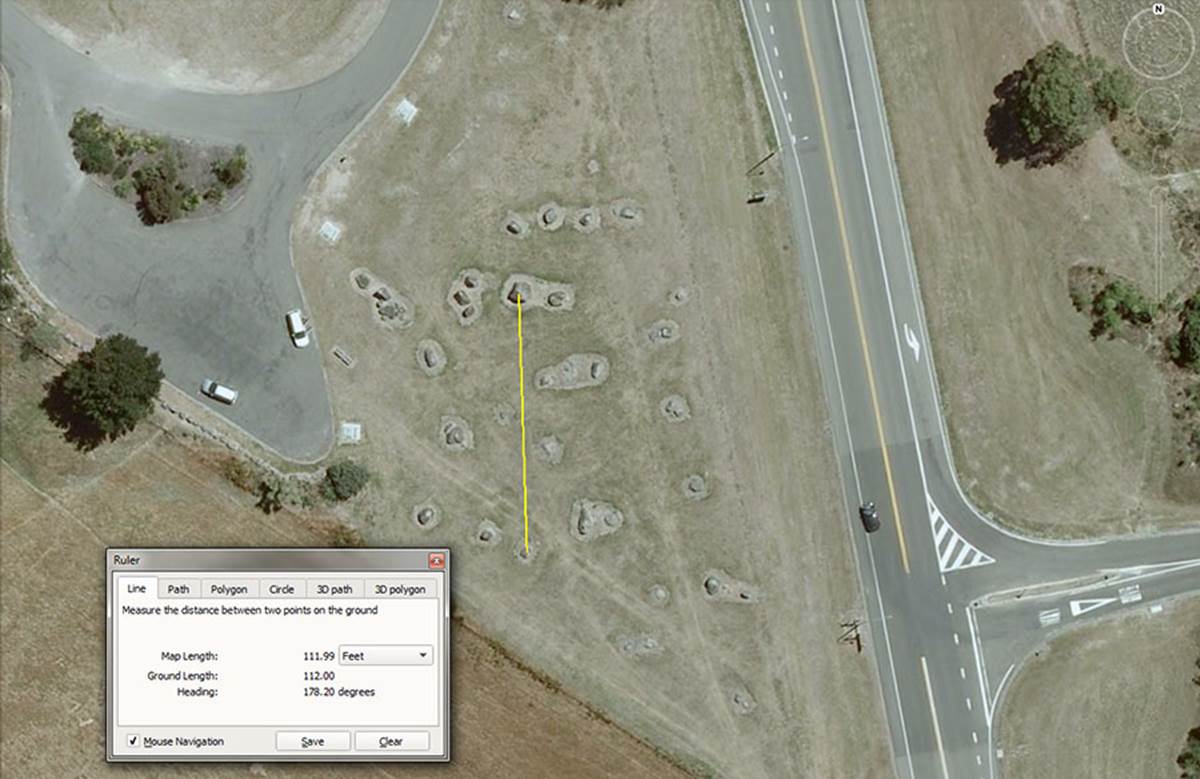
This site carries tutorials for the distances 110, 112 & 113.4-feet respectively at an angle of 178.2-degrees.
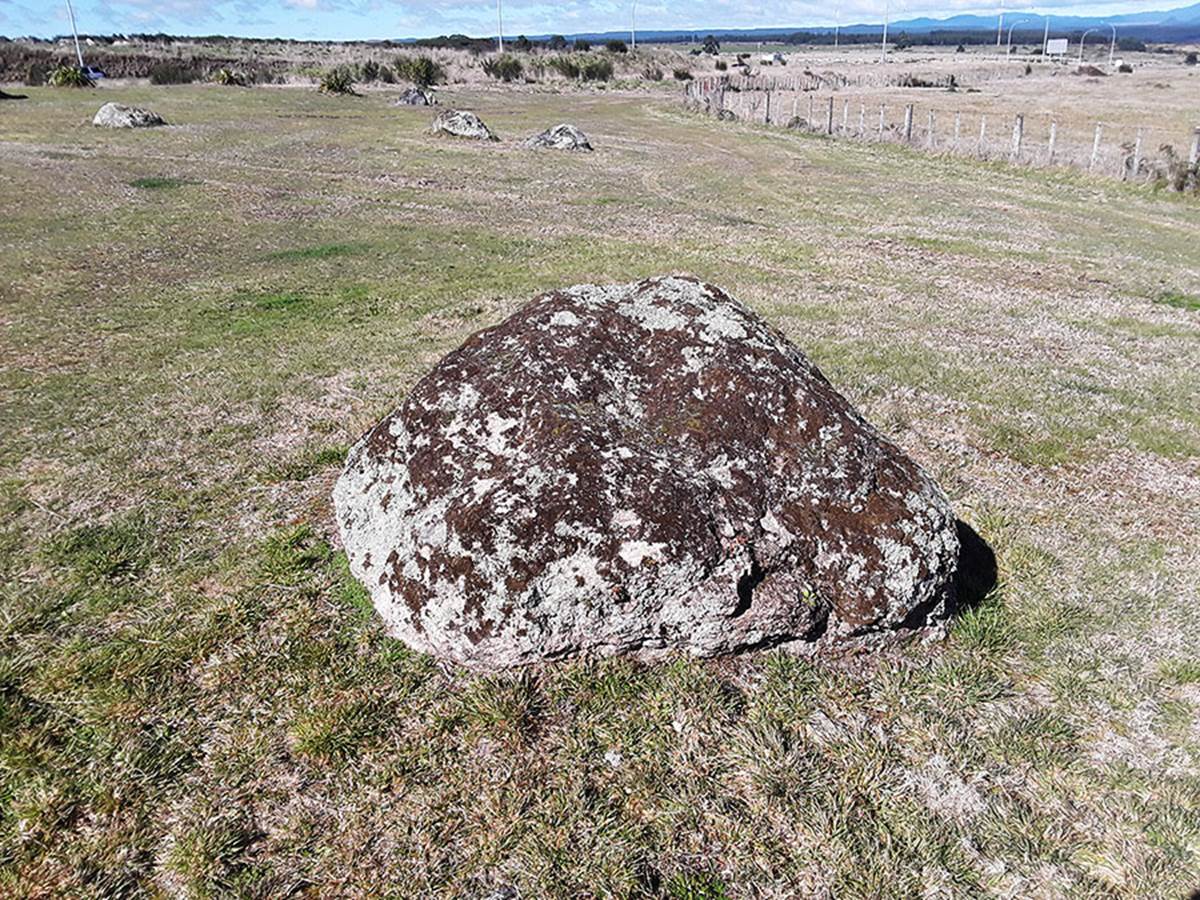
The boulder at position 3, carrying 3 important length codes through its girth and the angle code of 178.2-degrees from the hubstone. It’s highly likely that the eastern side of the stone (foreground) was used to designate 180-degrees (due south) from the hubstone.
1. A progression based upon 110 goes:
110, 220,330, 440, 550, 660, 770, 880, 990, 1100, 1210, 1320, 1430, 1540, 1650, 1760, 1870, 1980, … 2640, … 2970, 5280, … 5940, … 7920,… 16500,… 24750.
In the above line-up, 110-feet would be 20 ancient fathoms of 5.5-feet each (such fathoms were standard in the merchant navy into the 20th century).
The sum of 660-feet is 1-furlong or 10 chains; 1320-feet is 1/4th of a mile; 1650-feet is 100 rods/perches; 1760-feet is 1/3rd of a mile; 1980-miles is 1/4th of the Earth’s diameter; 2640-feet is ½ a mile; 2970-feet is ½ an ancient Scottish mile; 5280-feet is the English mile; 5940-feet is the ancient Scottish mile; 7920-miles is the diameter of the Earth; 16500-feet is the ancient English league; 24750-miles was the value used for the equatorial circumference of the Earth when navigating by the English mile and league.
2. A second distance reading into the centre position of the stone is 112-feet and that numerical progression goes:
112, 224, 336, 448, 560, 672, 784, 896, 1008, 1120, 1232, 1344, … 1680, … 2016, … 2240, … 2268, … 2800, … 3024, … 6048,… etc.
This progression was traditionally used for weights standard, especially under English systems handed down or re-established from older standards of antiquity.
The value of 112-pounds was the CWT or 1/20th of the ton; 2240-pounds was the ton; 100.8-feet is 1-second of equatorial arc under the literal geodetic system encoded into the Great Pyramid’s base perimeter length; 2016-feet is 1/3rd of 1-minute of arc; 3024-feet is 1 complete circuit around the Great Pyramid’s base & ½ a minute of arc; 6048-feet is 1-minute of arc.
3. The boulder can also accommodate a length of 113.4-feet and this progression goes:
113.4, 226.8, 340.2, 453.6, 567, 680.4, 793.8, 907.2, … 1134, … 1360.8, … 1701, … 2268, … 2835, … 3402, … 3628.8, … 5443.2, … 5670, … 6804, … etc.
A measuring rule of 11.34-inches would provide a length 1/800th of the 756-feet length of the Great Pyramid (9072-inches or 756-feet) and would allow for readings based upon lunar cycle durations; 340.2-feet is the diameter of Avebury Henge’s southern circle in England, as well as the standing stone circle of Brodgar Ring in the Orkney Islands of Scotland. The sum of 3402-days is ½ of the lunar nutation cycle of 6804-days where the moon goes from lunar Major standstill, to lunar Minor standstill and back to lunar Major standstill again; the Khafre Pyramid of Egypt is 15/16ths the length of the Great Pyramid or 2835-feet for all 4 sides (34020-inches); 3 sides of the Great Pyramid @ 756-feet per side = 2268-feet (1134 X 2); 362880-feet = 1-degree of equatorial arc under the Great Pyramid’s dimension-encoded navigational system. 567-days is 1/12th of the 6804-day lunar nutation cycle.
4. The degree angle to this position was coded to represent 178.2-degrees and this progression goes:
178.2, 356.4, 534.6, 712.8, 891, 1069.2, … 1782, … etc.
The “Y”-holes circle at Stonehenge is 178.2-feet in diameter or 72 increments of 2.475-feet (29.7-inches) … remember, under one system of navigation the world was considered to be 24750-miles around. Remember also that 2970-feet was ½ an ancient Scottish mile.
The navigational system based upon the mile of 5280-feet saw the Earth as being 24750-miles in circumference and divisible by either the English mile or Scottish mile of 5940' (1-furlong greater in length or 660'). In assessing lengths marked into ancient sites (like around Newgrange, Ireland for example) it becomes apparent that there were measurement increments in use based upon 2.475-inches and 24.75-feet (297-inches). The sum of 247.5-inches = 12 Egyptian Royal cubits @ 20.625-inches each and the sum of 247.50-feet = 144 X 20.625-inches (or 144 Egyptian Royal cubits). This increment (20.625-inches) was the 2nd of 3 Royal cubits identified by William Flinders Petrie* during his years of exhaustive measurements of the Giza Plateau edifices.
Larger expressions of these values are fluidly divisible by either 2.4750 or 2.970, etc., also 5.28 or 5.94 (in deference to the English and Scottish miles).
The progression is just another way of keeping the 24750-mile equatorial circumference, navigational system at the forefront of memory. The 130680000' equatorial circumference was either 5280-feet X 24750 or 5940-feet X 22000 ... or 76032000 Egyptian Royal Cubits of 20.625-inches.
There were many different measurement rules in ancient usage, depending upon the kind of calculation one was doing. The 3 Egyptian Royal cubits, in overall length, were fashioned for encoding the equatorial circumference of the Earth under 3 systems or readings.
*Note: The existence of the 20.625-inch Royal Cubit is confirmed by the careful measurements of Sir William Flinders Petrie in the King's Chamber of the Great Pyramid. Petrie concluded that the room was built according to a cubit of 20.620-inches, plus or minus .005 of an inch. The upper scale of his estimate is, therefore, 20.625-inches (see The Pyramids and Temples of Gizeh, by Sir William Flinders Petrie).
POSITION 4.
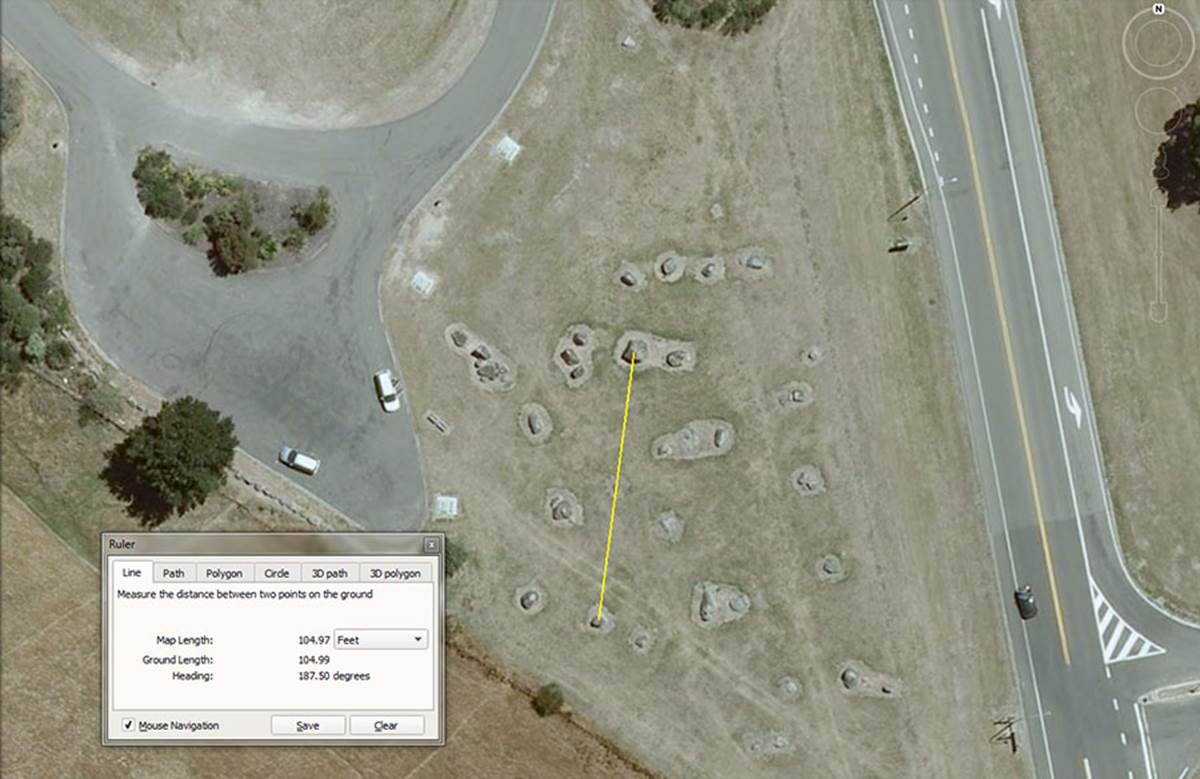
This outer-marker boulder codes 105-feet @ 187.5-degrees.
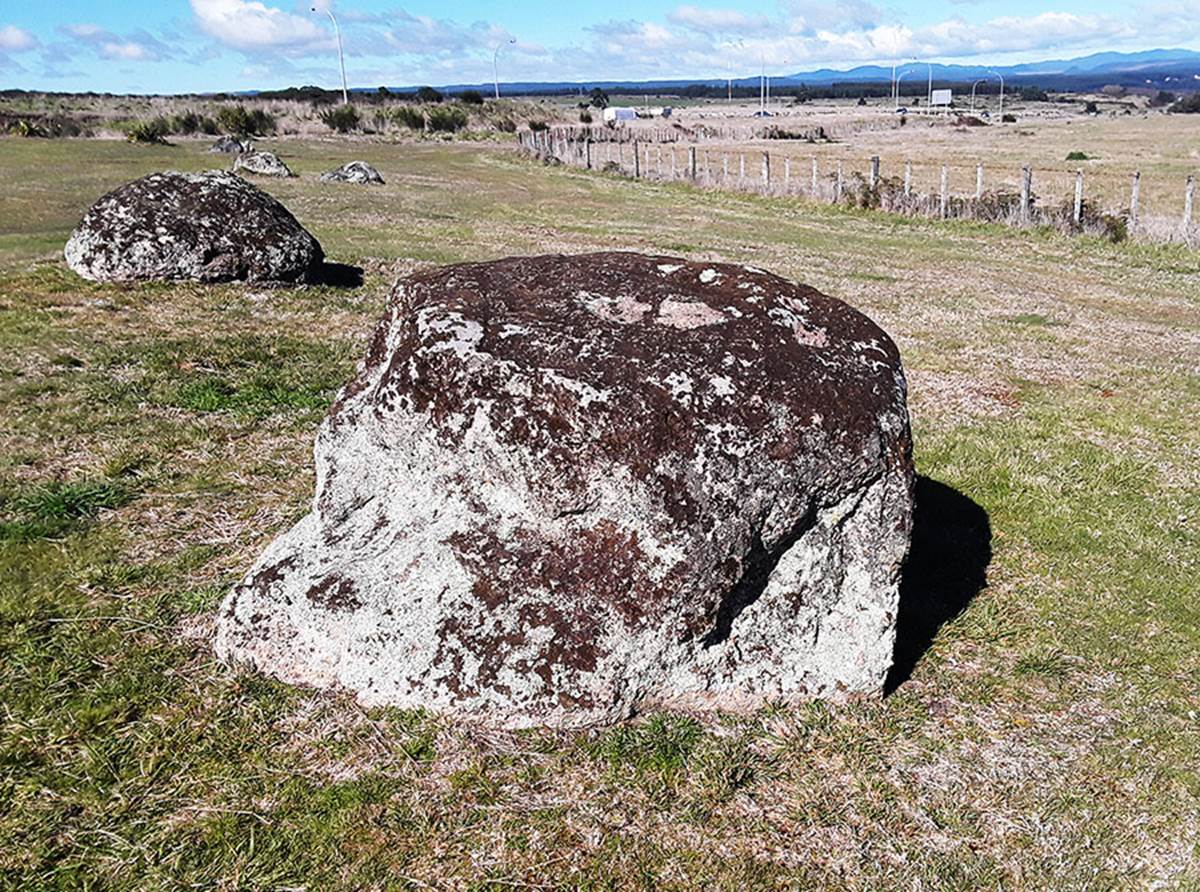
This large boulder sits 105-feet from the hubstone @ 187.5-degrees.
1. A progression based upon 105 goes:
105, 210, 315, 420, 525, 630, 735, 840, 945, 1050, 1155, 1260, 1365, 1470, 1575, 1680, 1785, 1890, … 2520, … 2625, … 2835, … 3780, … 4725, … 5250, … 6300, … 7560, …etc.
The sum of 105-feet is 10 Hebrew/ Greek reeds of 126-inches each. This distance is also 100 Greek feet of 12.6-inches or 50 Assyrian cubits of 25.2-inches each.
In so-called Greek metrology 315-feet was ½ of a long stadia (630-feet). In a symbolic sense it was also an expression of PI @ 3.15. On the inner rim of Stonehenge’s Sarsen Circle, the cross diameter in one direction was 100-feet, giving a reading of 314.16-feet of circumference or 315-feet. The 90-degrees cross-measure was 100.8-feet to code 1-second of equatorial arc.
In the above line-up, 525-feet was a Greek short stadia or 1/10th of a Greek mile of 5250-feet; 1575-feet was 1/4th of 6300-feet, 10-stadia and the diameter of the ancient geometric embankment “Great Circle” of Newark, Ohio, USA.
Other values are: 1890 (1/4th of the Great Pyramid’s length is 189-feet); 2625-feet is ½ of a Greek mile; 2835-feet is the total in side lengths for a circumnavigation around the Khafre Pyramid @ 708.75-feet per side; 756-feet is, of course, the side length of the Great Pyramid.
2. A progression based upon the angle 187.5 goes:
187.5, 375, 562.5, 750, 937.5, 1125, 1312.5, 1500, 1687.5, 1875, 2062.5, 2250, 2437.5, 2625, 2812.5, 3000, … 5250, … 6187.5, … 11812.5, … 16500, … 19687.5, … 20625, … 24750, …etc.
This progression alternates between lunar duration values and navigational values under two systems, as well as subdivisions of the 360-degree compass into 8-based segmentation values, etc.
The 180-degrees opposed angle value, back to the hubstone (7.5-degrees) provides 1/48th divisions to the 360-degree compass, which includes primary and secondary compass angles, as well as solstice or equinox rise & set positions for latitudes within New Zealand.
That progression goes:
0, 7.5, 15, 22.5, 30, 37.5, 45, 52.5, 60, 67.5, 75, 82.5, 90, 97.5, 105, 112.5, 120, 127.5, 135, 142.5, 150, 157.5, 165, 172.5, 180, 187.5, 195, 202.5, 210, 217.5, 225, 232.5, 240, 247.5, 255, 262.5, 270, 277.5, 285, 292.5, 300, 307,5, 315, 322.5, 330, 337.5, 345, 352.5, 360.